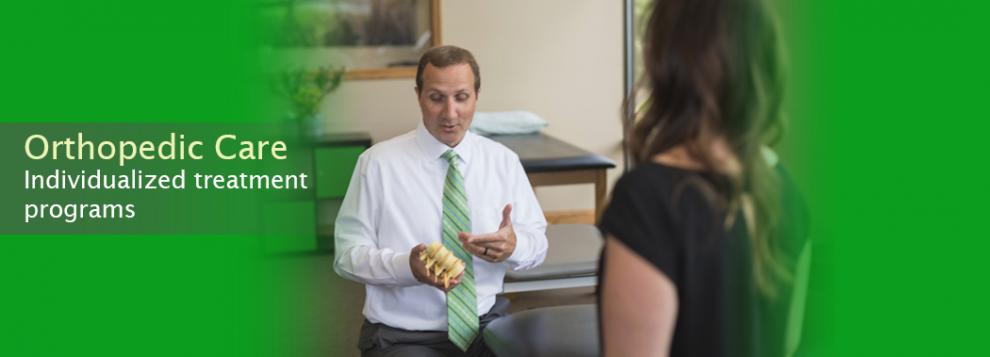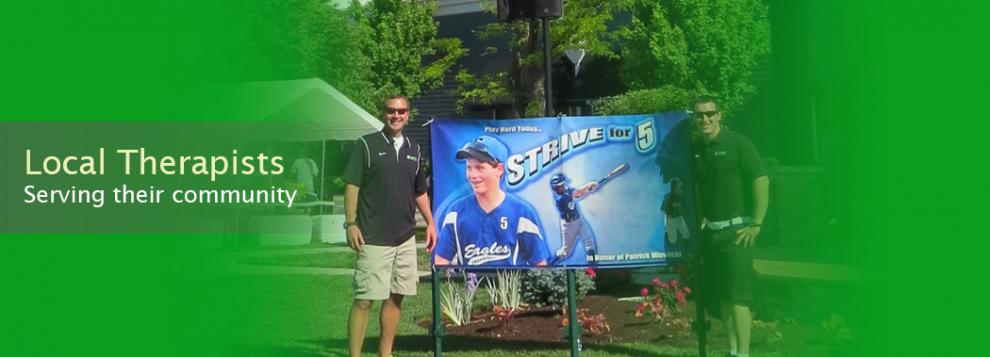Physical therapy in Frankfort, New Lenox for Shoulder
Q: Have you ever heard of using laser to treat a shoulder impingement problem? How does it work?
A: Shoulder impingement is a common condition causing significant shoulder pain in adults of all ages. Most of the time, the problem is one of subacromial impingement. Impingement means something is getting pinched. Subacromial tells us that the something in question is located under the acromion. The acromion is a piece of bone that comes around from behind where it starts in the shoulder blade and curves over the top of the shoulder.
At first, there is swelling and even hemorrhage (bleeding) of the subacromial bursa and rotator cuff. The bursa is a little cushion between the acromion and the head of the humerus (upper arm bone). Repetitive motions of the shoulder are linked with subacromial impingement syndrome.
The rotator cuff is always involved in shoulder impingement syndromes. It is made up of four tendons and their attached muscles. They enclose the entire shoulder like an envelope and give it support, stability, and functional movement. With subacromial impingement, the supraspinatus tendon of the rotator cuff is involved because it slips under the acromion and attaches into the greater tubercle, a bony bump on the humerus.
The supraspinatus abducts the arm (moves it away from the body). In someone with subacromial impingement syndrome, shoulder abduction and shoulder internal rotation cause severe pain. The supraspinatus muscle contracts to pull the arm up but at the same time, the head of the humerus slips up too far and bangs into the acromion. In the process, the supraspinatus gets pinched.
If nothing is done to stop this pattern of dysfunctional movement, fibrosis (fibrous scarring) and tendinopathy (irreversible tendon damage) develop and the condition progresses. As time goes by, and the shoulder continues to wear and tear from this syndrome and the rotator cuff is partially or completely torn through.
There are many ways to approach this problem. Some are based on how much damage has been done by the time the patient is diagnosed. When impingement first starts, nonsteroidal antiinflammatories are often prescribed but studies don't really support their use. However, inflammation may be reduced with physical therapy modalities such as ultrasound or laser therapy.
Ultrasound is a way to heat the tissues deep in the shoulder to bring blood circulation to the area for healing. High-intensity laser works by exposing the tissue to light energy. The light is absorbed and then stimulates tissue healing at the cellular level. The intended result is to decrease pain.
The effectiveness of this type of laser therapy for shoulder impingement is under investigation. In a recent study from the Virginia Commonwealth University, high-intensity laser was very beneficial in reducing pain and improving strength and function. It was much more effective than the ultrasound treatments.
Research can now move forward in this area and take a look at optimal dosages and length of time for treatment with high-intensity laser. The results of this modality should be compared with other conservative treatments and/or placebo groups.
Reference: Andrea Santamato, MD, et al. Short-term Effects of High-Intensity Laser Therapy Versus Ultrasound Therapy in People with Subacromial Impingement Syndrome: A Randomized Clinical Trial. In Physical therapy. July 2009. Vol. 89. No. 7. Pp. 643-652.







